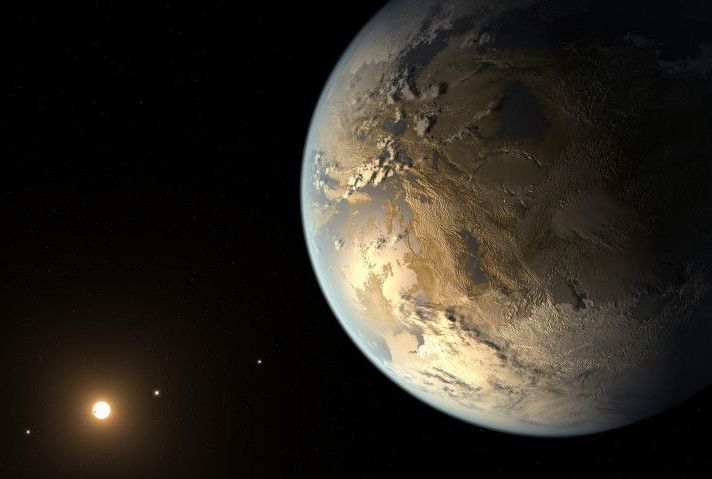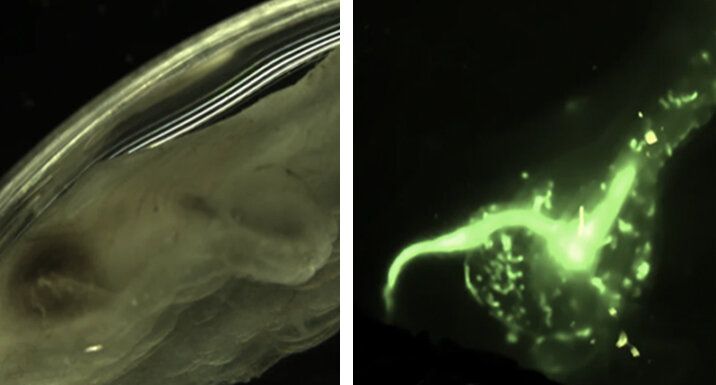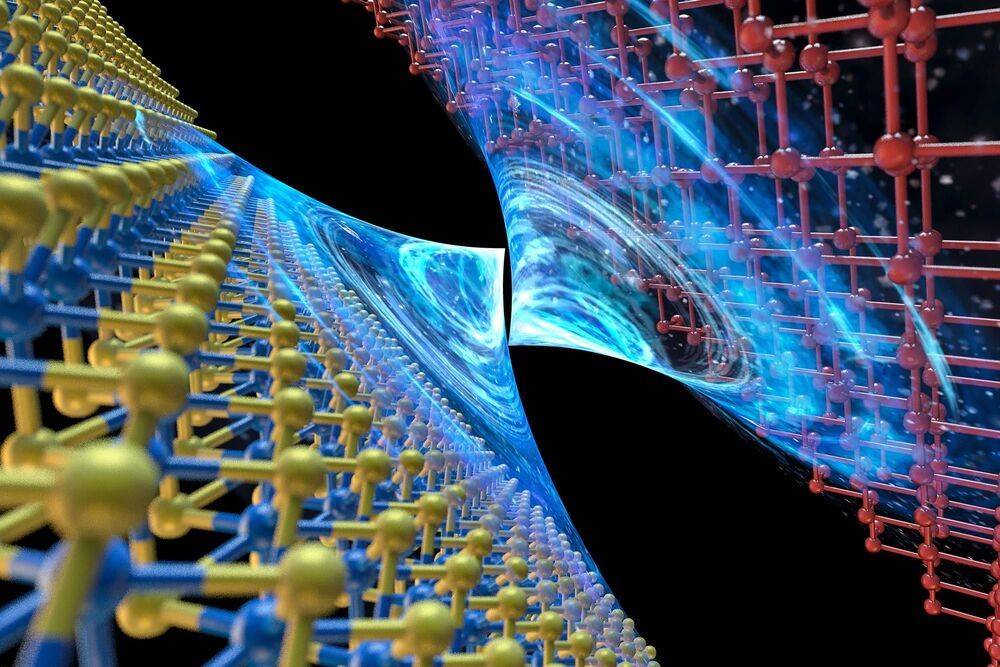Exoplanet hunting is difficult, and we are limited by our technology. But Peter Vickers believes we’re also limited by our biases.


Keep watching to look at three of the most fantastic quantum breakthroughs that bring liberation and freedom to the world of science today! Subscribe to Futurity for more videos.
#quantum #quantumcomputing #google.
As we advance as a species, there are a lot of things that once seemed impossible a century ago that are now a reality. It’s called evolving. For example, there was a time when most people believed the earth was flat. Then Eratosthenes came onto the scene and proved that the world is round.
At the time, it was groundbreaking. But today, quantum mechanics rules the roost. This school of physics deals with the physical realm on the scale of atoms and electrons; thus making many of the equations in classical mechanics useless. With that being said, let’s take a look at three of the most amazing quantum breakthroughs that are bringing liberation and freedom to the world of science today!
We kick things off with a team of Chinese scientists claiming to have constructed a quantum computer that has the ability to perform certain computations almost 100 trillion times faster than the world’s most advanced supercomputer.
The breakthrough sheds light on quantum computational advantage—which is also famously known as quantum supremacy. But it’s become a hotly-contested tech race between Chinese researchers and some of the largest US tech corporations such as Amazon, Google, and Microsoft.
It may not look nice, but maybe it can help prevent accidents. 😃
It’s generally good to watch where you’re going while out walking around, but if you’re someone who just can’t resist a glance at your phone – or a full scrolling session – then this industrial design student’s third eye is for you.
Created as part of his Innovation Design Engineering degree at London’s Royal College of Art and Imperial College, student Minwook Paeng came up with the impressive piece of tech to help out all the ‘phono-sapiens’ out there.
With so much of our lives now wrapped up in our phones, Paeng’s ‘third eye’ offers a solution to issues that can present themselves as we walk around with our heads down, taking in everything on the screen.
Engineering A Safer World For Humans With Self Driving Cars, Drones, and Robots — Dr. Missy Cummings PhD, Professor, Duke University, Director, Humans and Autonomy Laboratory, Duke Engineering.
Dr. Mary “Missy” Cummings, is a Professor in the Department of Electrical and Computer Engineering, at the Pratt School of Engineering, at Duke University, the Duke Institute of Brain Sciences, and is the Director of the Humans and Autonomy Laboratory and Duke Robotics.
Dr. Cummings received her B.S. in Mathematics from the US Naval Academy in 1988, her M.S. in Space Systems Engineering from the Naval Postgraduate School in 1994, and her Ph.D. in Systems Engineering from the University of Virginia in 2004.
Dr… Cummings was one of the Navy’s first female fighter pilots earning the rank of lieutenant and serving as naval officer and military pilot from 1988–1999.
Dr. Cummings research interests include human-unmanned vehicle interaction, human-autonomous system collaboration, human-systems engineering, public policy implications of unmanned vehicles, and the ethical and social impact of technology.

Researchers from University of Copenhagen have investigated what happened to a specific kind of plasma—the first matter ever to be present—during the first microsecond of Big Bang. Their findings provide a piece of the puzzle to the evolution of the universe, as we know it today.
About 14 billion years ago, our universe changed from being a lot hotter and denser to expanding radically—a process that scientists have named the Big Bang.
And even though we know that this fast expansion created particles, atoms, stars, galaxies and life as we know it today, the details of how it all happened are still unknown.

If you’ve been to your local beach, you may have noticed the wind tossing around litter such as an empty potato chip bag or a plastic straw. These plastics often make their way into the ocean, affecting not only marine life and the environment but also threatening food safety and human health.
Eventually, many of these plastics break down into microscopic sizes, making it hard for scientists to quantify and measure them. Researchers call these incredibly small fragments nanoplastics and microplastics because they are not visible to the naked eye. Now, in a multiorganizational effort led by the National Institute of Standards and Technology (NIST) and the European Commission’s Joint Research Centre (JRC), researchers are turning to a lower part of the food chain to solve this problem.
The researchers have developed a novel method that uses a filter-feeding marine species to collect these tiny plastics from ocean water. The team published its findings as a proof-of-principle study in the scientific journal Microplastics and Nanoplastics.
Papers referenced in the video:
Therapeutic Potential of NAD-Boosting Molecules: The In Vivo Evidence:
https://pubmed.ncbi.nlm.nih.gov/29514064/
NAD and the aging process: Role in life, death and everything in between:
https://pubmed.ncbi.nlm.nih.gov/27825999/
Flavonoids as inhibitors of human CD38:
https://pubmed.ncbi.nlm.nih.gov/21641214/
Flavonoid apigenin is an inhibitor of the NAD+ ase CD38: implications for cellular NAD+ metabolism, protein acetylation, and treatment of metabolic syndrome:
https://pubmed.ncbi.nlm.nih.gov/23172919/
Characterization of Anthocyanins and Proanthocyanidins in Some Cultivars of Ribes, Aronia, and Sambucus and Their Antioxidant Capacity:
Technology around space travel is accelerating at a rapid pace. As a result, we may soon see a future where one doesn’t need to be an astronaut to travel the stars. But there’s a long line of legal and safety logistics to be met before we can all start booking our personal space voyages.
#Space #Accelerate #BloombergQuicktake.
——-
Like this video? Subscribe: https://www.youtube.com/Bloomberg?sub_confirmation=1
Become a Quicktake Member for exclusive perks: https://www.youtube.com/bloomberg/join.
QuickTake Originals is Bloomberg’s official premium video channel. We bring you insights and analysis from business, science, and technology experts who are shaping our future. We’re home to Hello World, Giant Leap, Storylines, and the series powering CityLab, Bloomberg Businessweek, Bloomberg Green, and much more.
Subscribe for business news, but not as you’ve known it: exclusive interviews, fascinating profiles, data-driven analysis, and the latest in tech innovation from around the world.
Visit our partner channel QuickTake News for breaking global news and insight in an instant.

Atomically thin materials are a promising alternative to silicon-based transistors; now researchers can connect them more efficiently to other chip elements.
Moore’s Law, the famous prediction that the number of transistors that can be packed onto a microchip will double every couple of years, has been bumping into basic physical limits. These limits could bring decades of progress to a halt, unless new approaches are found.
One new direction being explored is the use of atomically thin materials instead of silicon as the basis for new transistors, but connecting those “2D” materials to other conventional electronic components has proved difficult.
